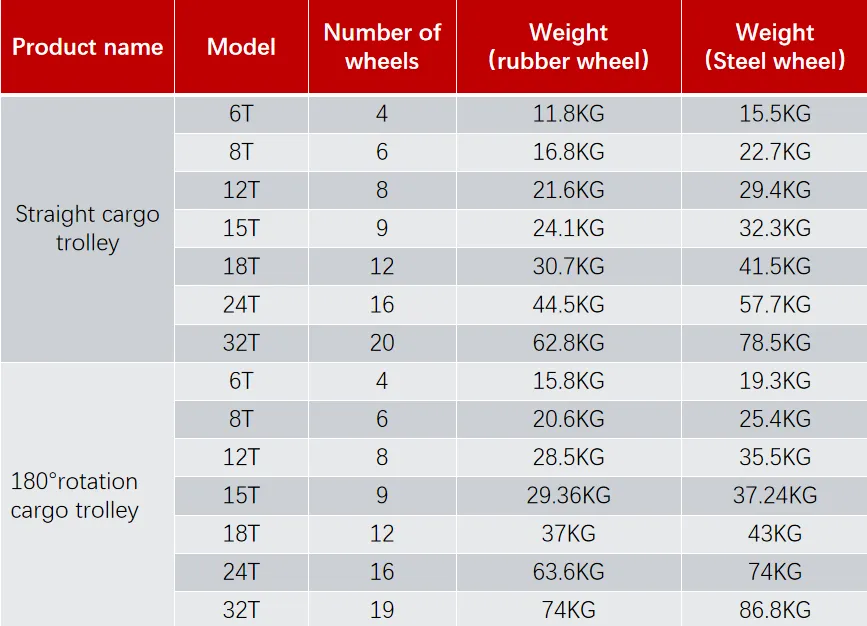double girder bridge crane
Understanding Double Girder Bridge Cranes
Double girder bridge cranes are sophisticated lifting solutions utilized in various industries for material handling and transportation. Their robust design and ability to handle heavy loads make them an essential component in manufacturing, construction, and warehousing environments. This article explores the characteristics, advantages, applications, and maintenance of double girder bridge cranes.
What Is a Double Girder Bridge Crane?
A double girder bridge crane consists of two parallel girders that support the crane's movements and operations. The bridge spans the width of the area where lifting tasks need to be performed, typically mounted on support columns or rails. The hoist, which is the vertical lifting mechanism, is positioned between the girders, allowing for greater lifting heights and enhanced stability.
Advantages of Double Girder Bridge Cranes
1. Load Capacity Double girder bridge cranes can handle much heavier loads than their single girder counterparts. This is due to the structural integrity and design of the dual girders, which distribute weight evenly and allow for higher load ratings.
2. Height Clearance The design of double girder cranes allows for increased hook height, providing more vertical lifting space. This is advantageous when moving large materials or equipment within a facility.
3. Versatility These cranes can be customized with different hoist types, trolleys, and control systems, making them suitable for various applications, from heavy industrial lifting to precise assembly tasks.
4. Durability Built to withstand demanding environments, double girder cranes are made from high-strength materials designed to endure the rigors of heavy use. This durability results in lower maintenance costs over time.
double girder bridge crane

5. Operational Efficiency With their ability to move heavy loads swiftly and accurately, double girder bridge cranes enhance operational efficiency in any facility. Their advanced control systems also allow for precision movements, reducing the risk of accidents.
Applications of Double Girder Bridge Cranes
Double girder bridge cranes find applications in multiple sectors, including
- Manufacturing Used for lifting and transporting heavy machinery and materials throughout production lines. - Construction Essential for moving building materials, including steel beams, concrete blocks, and prefabricated components. - Warehousing Ideal for facilities that require the movement of large items, such as pallets and bulk materials, enhancing storage and retrieval processes. - Shipbuilding Facilitates lifting and moving substantial ship components during construction and repair.
Maintenance of Double Girder Bridge Cranes
To ensure optimal performance and safety, regular maintenance of double girder bridge cranes is critical. Important maintenance tasks include
- Inspecting Mechanical Components Routine checks of the hoist, trolley, and girder alignment ensure smooth operation and prevent wear and tear. - Lubrication Proper lubrication of moving parts reduces friction, enhancing operational efficiency and extending the lifespan of the crane. - Safety Inspections Regular inspections to confirm that all safety features, including emergency stops and limit switches, are functioning correctly.
Conclusion
In summary, double girder bridge cranes are pivotal in modern industrial operations, capable of handling heavy loads while offering versatility and efficiency. Their robust construction, combined with proper maintenance, ensures they remain effective and safe tools in various applications, from manufacturing to construction and beyond. As industries continue to evolve, the significance of double girder bridge cranes in enhancing productivity and safety cannot be overstated.
-
Unlock Seamless Relocation with Our Heavy Equipment Moving ExpertiseNewsJun.06,2025
-
Unleash Unrivaled Flexibility with Our Adjustable Gantry CraneNewsJun.06,2025
-
Unleash Heavy-Duty Efficiency with Our Industrial Gantry Crane SolutionsNewsJun.06,2025
-
Revolutionize Steel Handling with Our Magnetic Lifter RangeNewsJun.06,2025
-
Master Equipment Mobility with Premium Machinery Mover SolutionsNewsJun.06,2025
-
Elevate Your Material Handling with Magnetic Lifter TechnologyNewsJun.06,2025
-
YS Permanent Lifting Magnets: The Smarter Way to Handle SteelNewsMay.22,2025
